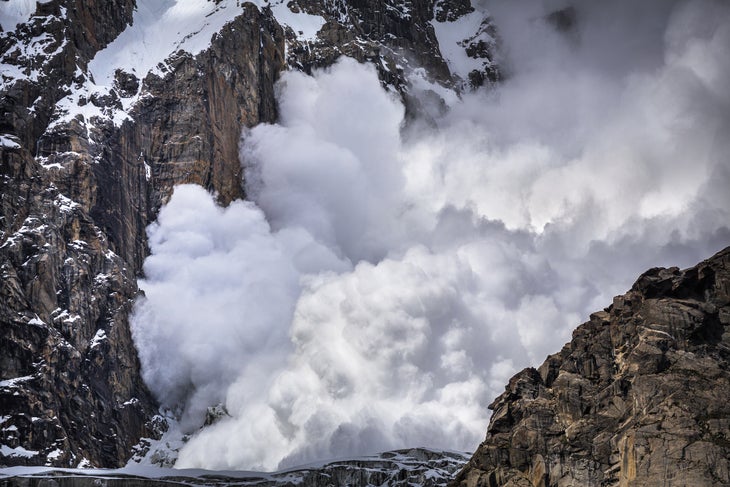Products You May Like
Receive $50 off an eligible $100 purchase at the Outside Shop, where you’ll find gear for all your adventures outdoors.
Sign up for Outside+ today.
Whether you’re searching for mellow, untouched powder or hunting for steep couloirs, if you are skiing in the backcountry, there’s a good chance you’re traveling through avalanche terrain.
In addition to carrying a beacon, shovel, and probe (mandatory safety equipment any time you enter the backcountry), many skiers wear backpacks containing inflatable airbags as an extra line of defense in case they get caught in an avalanche.
While an airbag isn’t a free pass to drop into something you wouldn’t otherwise ski without it, when deployed properly and used in the correct terrain, airbags can increase the chance of a skier’s survival in an avalanche by anywhere from 31 percent to 85 percent compared to those without one.
Where to Use an Avalanche Airbag
Airbags work best in terrain without significant obstacles, like trees, cliffs, terrain traps, or large avalanche paths.
“On a long, planar slope with a clean runout, avalanche airbags are super effective,” says Drew Layman, a Crested Butte, Colorado-based ski guide who works for Majestic Heli, Irwin Guides, and Fall Line Expeditions. “Especially in continental snowpacks where we see so many deadly avalanches in above-tree line bowls.”
According to Bruce Tremper’s classic treatise Staying Alive in Avalanche Terrain, over 25 percent of avalanche victims in the United States die from trauma by hitting trees and rocks on the way down, what Layman refers to as “risk magnifiers.” Risk magnifiers greatly reduce the efficacy of an airbag pack. Likewise, if you take a ride in a large or historic avalanche, or get washed into a terrain trap—like a gully or creek bed—an airbag won’t be able to float the skier to the surface because of the sheer force of snow or shape of the terrain feature. Layman also points out that airbags aren’t effective if you’re caught in an avalanche from above, as in a remotely triggered slide. “You pretty much need to skier-trigger a slab for it to work, they don’t work from below.” That’s because the airbag can help to keep the skier afloat upon getting caught in an avalanche, but it won’t provide buoyancy if large amounts of snow are already on top of you.

When a skier is caught in an avalanche and pulls the trigger on their airbag, a balloon filled with air inflates around them (powered by either a compressed air canister or an electric fan), helping to keep them closer to the surface of the debris. This is because of a process known as inverse segregation (sometimes referred to as the Brazil nut effect) which causes the largest object in a mixture to float to the top. Shake a bag of mixed nuts and you’ll quickly notice that the Brazil nuts rise to the top, while peanuts sink further and further into the depths of the bag as you eat.
Limitation of Airbags
Weight is a big consideration when deciding whether to carry an airbag, since the system usually adds four to five pounds to a ski pack, depending on the brand. Layman says that with mechanized travel, like cat skiing or heli skiing, where you’re traveling through a high volume of terrain top down, an airbag is a no-brainer. “Anytime I mechanized ski I have an airbag,” he says. “That’s when you’re most likely to skier-trigger a slide, and weight limitations are less important.”
Some experts also question the benefit of airbags on the basis of “risk homeostasis,” or the idea that skiers might venture into terrain they’d otherwise avoid because they have the perceived safety blanket of an airbag. “I think there’s something to be said for risk homeostasis, but I think the benefits outweigh that,” Layman says. “They used to say if you ski with a beacon you’re going to make bad decisions, but now we wouldn’t even look at avalanche terrain without one. That shouldn’t factor into your decision.”
The bottom line: If you’re a backcountry skier who travels through avalanche terrain, an airbag is a great way to increase your safety margins, as long as you don’t assume extra risk because you feel you have the safety net of an airbag. Ski with it, but don’t let it affect your terrain choices.
